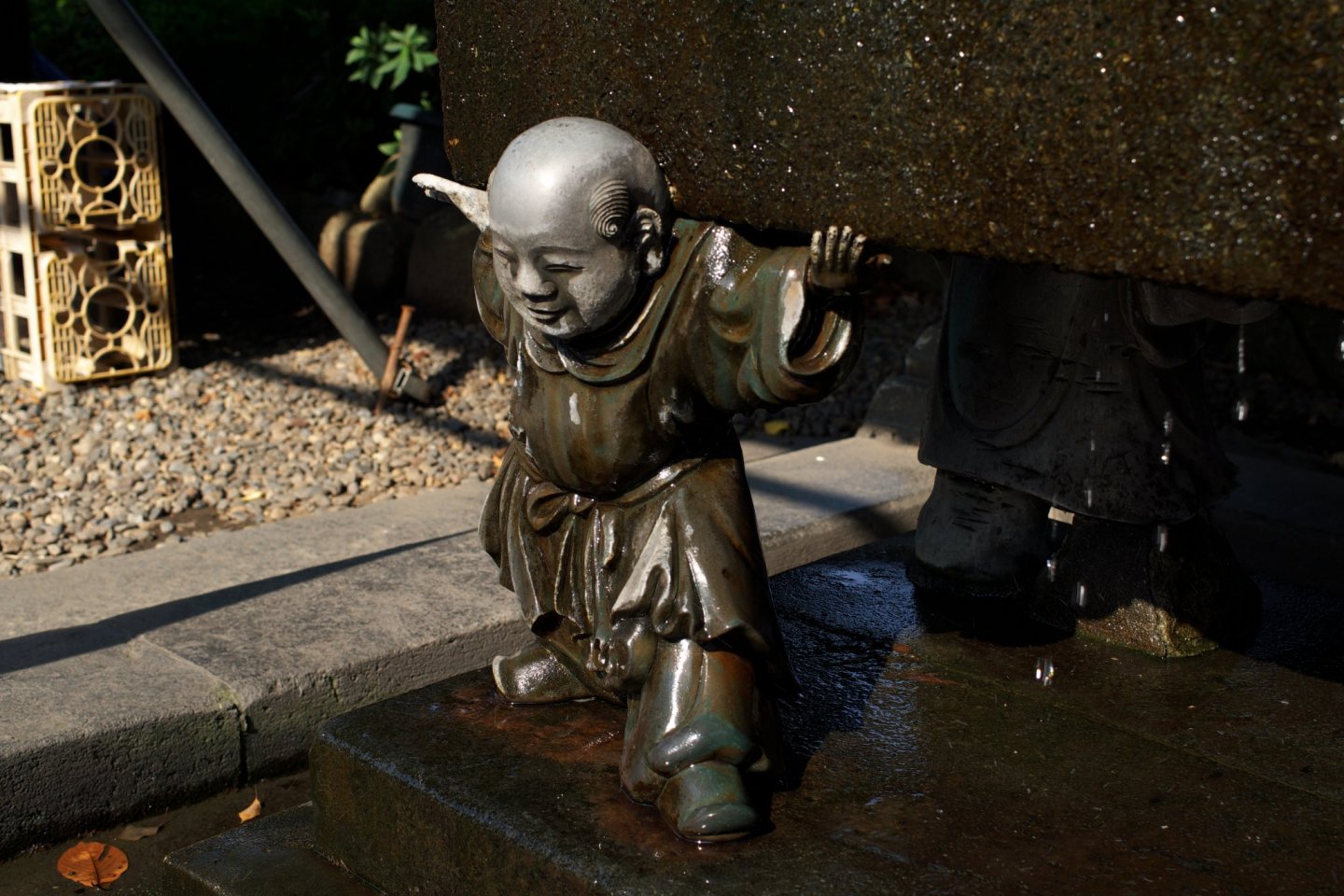Overview
Down-to-earth Adachi City Ward turns out to be a trove of history, culture and heritage. Some of its temples and shrines feature legendary healing powers, others offer links to a feudal Mt. Fuji religious cult, while some appeal with traditional landscaping and design. Here is an introduction to some of the temples and shrines of Adachi.
Entenji Temple
Thought to have been established in the mid-11th century, surviving verses relate how the famous haiku poet, Kobayashi Issa, would regularly walk the surrounds of Entenji Temple. Along with some enthralling statues of frogs doing sumo, the temple hosts an annual Issa Festival in November. To help celebrate the poet, a sumo festival is held that sees competitors wear frog suits...
A 12-minute walk from Takenotsuka Station on the Tobu Skytree Line.
Hanahata Otori Shrine
Seated right by Kena River lies Hanahata Otori Shrine, a quietly wooded Shinto shrine featuring a lovely landscaped pond garden with bridge. Plenty of space amongst the trees sees the shrine host numerous cultural festivals throughout the year. The buildings themselves, while relatively recent, are also home to some exquisitely woodworked dragon motifs.
A 10-minute no.14 or no.1 bus ride from Yatsuka Station on the Tobu Skytree Line.
Nishiarai Daishi Temple
One of Tokyo's top three Shingon Buddhist temples, Nishiarai Daishi Temple dates back to the ninth century. Aside from its massive size, the temple is home to a salt-covered jizo statue famous for its wart curing powers. Custom has it that after praying, one takes a pinch of salt, returning with twice the amount should the warts disappear.
A 5-minute walk from Daishi Mae Station on the Tobu Skytree branch line, Tobu Daishi Line.
Okawamachi Hikawa Shrine
Said to have been established in the late 13th century, Okawamachi Hikawa Shrine is best known for its fujizuka. A relic of an Edo-period Mt. Fuji cult, fujizuka are mini-mountains constructed out of stones and soil brought in from the real Mt. Fuji. Used as an equivalent by pilgrims unable to visit the real mountain, the shrine's fujizuka includes its own torii sacred gate.
A 15-minute walk from Kita Senju Station on the Chiyoda or Hibiya lines or the JR Joban Line.

























